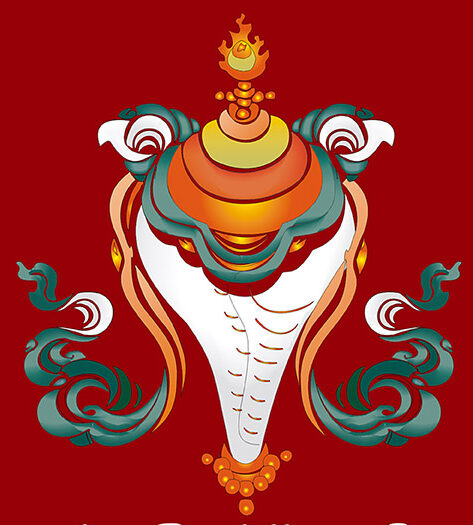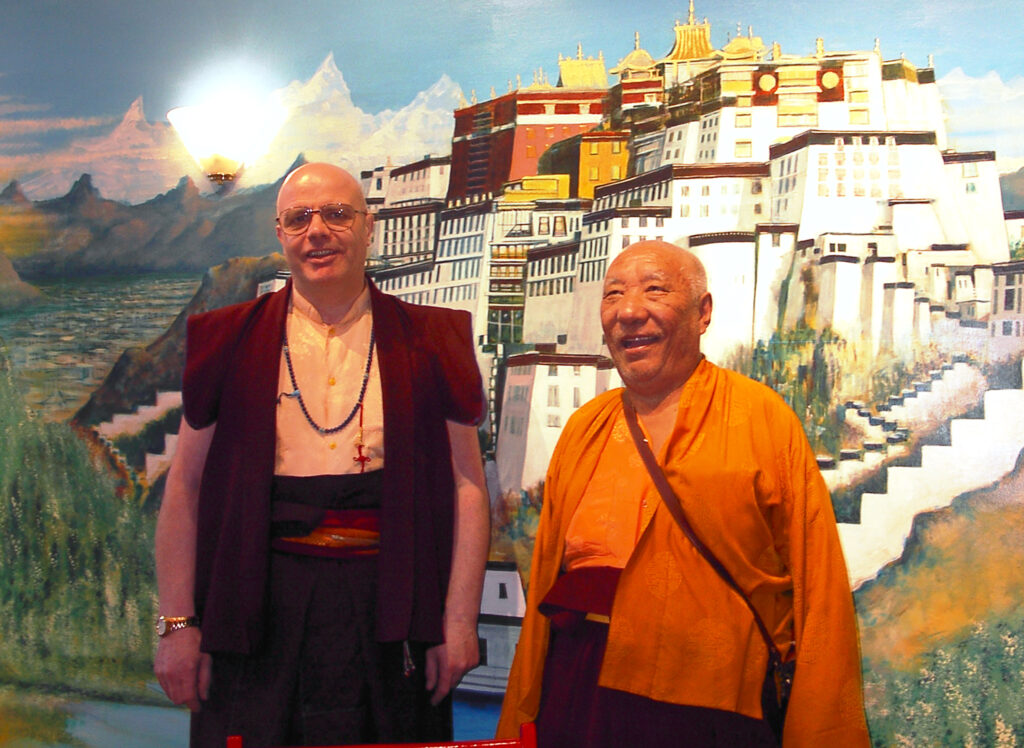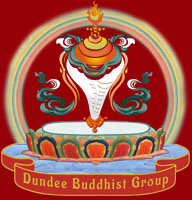The DBG Wisdom Series – The practices in a Nutshell.
Here, Karma Jiga presents a summary of The Mahamudra System of practices as given by Khenpo Tsultrim Gyamtso, who taught here in Dundee to the Dundee Buddhist Group (DBG) at Lama Jiga’s centre. He is the highest authority in meditation and teaching in the Karma Kagyu Tradition. The Venerable Khenpo, is a great yogi, and one of the most learned Lama’s to come out of Tibet. Read more in the gallery page. Thanks.



The Khenpo explains, there are three traditions of Mahamudra, Sutra Mahamudra, Mantra Mahamudra and Essence Mahamudra. DBG meditation practices belong ot the first two, see table below.
| Sutra Mahamudra | Meditation for All | Tuesday evenings Saturdays. |
| Mantra Mahamudra | Visualisation Mantra recitation | Thursday evenings |

Background
There are 3 main cycles of teaching that the Buddha gave in the form of oral transmissions to his disciples. These cycles are called the three turnings of the wheel of dharma. The Three Turnings of the Wheel (of Dharma) refers to a framework for understanding the sutra cycles of the teachings of the Buddha. This framework was originally devised by the Yogachara school. Tibetan Buddhist and related traditions adapted then adopted this framework. The Tibetan tradtion is modelled on progressing through these three cycles or yanas one after the other.

The Indian texts found in the Tibetan canon, tell us that Shakyamuni Buddha taught the four noble truths, known as the first turning of the wheel of dharma. This collection of instructions is known as the Hinayana or “lesser vehicle”. The Buddha turned the wheel of dharma (dharmachakra) a second time , and later in his life , a third time. The 2nd of these cycles of teachings relates to emptiness and the empty nature of mind and what appears in it, the insubstantiality. The 3rd cycle or turning relates to buddha-nature or the mind as it is.
At some point, he also gave initiations and instructions for the less conventional lineages of the Vajrayana.

The Sutra Tradition
The sutra tradition of Mahamudra encompasses both the second and third turnings of the wheel of dharma [the teachings on emptiness and buddha-nature, respectively].
Khenpo said that, “according to the second turning of the wheel, the true nature of mind is beyond conceptual fabrication. That means it cannot be described as being existent or non-existent, as being something or nothing, or as being permanent or impermanent. Mind cannot be described or conceptualized in any of these ways: the nature of mind is beyond all conceptual fabrication”.

Furthermore, Khenpo also explains that , “according to the third turning of the wheel of dharma, which are the teachings on buddha-nature such as the Uttara Tantra Shastra, the true nature of mind is described as luminous clarity. This is the enlightened essence of the buddha-nature, completely free from any stain, completely free from any imperfection or flaw. This luminosity is inseparable from emptiness. So the true nature of mind is described as the union of clarity and emptiness.”
Texts such as the Mahayana Uttara Tantra Shastra describe the true nature of mind as luminous clarity. This is the enlightened essence of the Buddha-nature, completely free from any stain, imperfection or flaw. This luminosity is inseparable from emptiness and so the true nature of mind is described as the union of clarity and emptiness in these texts.
Lama Jiga studied the texts on emptiness and Buddha nature with H.E. The 12th Tai Situ Rinpoche, one of the 4 regents or highest teachers of the Karma Kagyu Tradition.

The Mantra Tradition
According to the Khenpo, “the mantra tradition of Mahamudra explains that the true nature of mind is the union of bliss and emptiness. To practice these meditations, you receive empowerments. The combination of practice and empowerments can bring the practitioner to realise this bliss-emptiness, which is the true nature of mind.“
Lama Jiga received the transmission of the instructions on the mantra tradition for the main mantra practices of the Kagyu lineage and the lineage transmission on how to draw their mandalas from the former Dorje Lopon of the Kagyu tradition, the previous incarnation of the Tenga Tulku.
He also received all the empowerments of these practices from the Very Venerable Thrangu Rinpoche, tutor to the head of the karma Kagyu Lineage, HH the 17th Karmapa, Urgyen Trinley Dorje.
Thrangu Rinpoche also composed Lama Jiga’s Long Life Prayer after the completion of his yidam practice, in which he declared Lama Jiga to be a Dharma Master.

May this benefit all – Sarva Magalam – May goodness prevail.
FYI – the main image at the head of this post features Khenpo Tsultrims retreat centre in the remote Yushu County in Kham, Tibet from Lama JIga’s personal collection.

